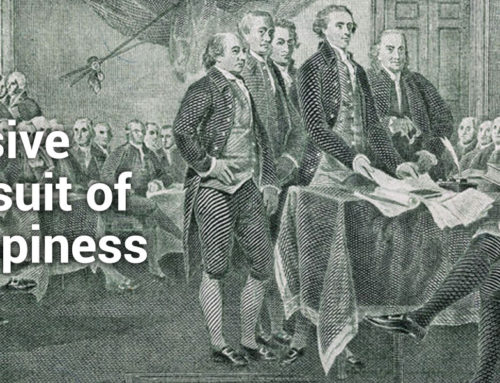In previous blogs, I have presented a comprehensive model of leadership that I have labeled The Performance Trilogy®. The framework describes the three fundamental processes that must be managed (learn more) and the three leadership roles needed for each process (link to Blog#5). The first process is developing a winning strategy that is well thought out, compelling, and well communicated (link to Blog#6). The second process is the flawless execution of the strategy. In the execution phase, the first step is to translate the strategy into actionable outputs or objectives for you and your team that will lead to the desired strategic outcomes. (learn more).
Many would argue that completing the first two processes of the Performance Trilogy® defines success; developing a winning strategy and successfully executing it. In my experience however, sustainable leadership requires that you complete the third process, gaining the trust of your team. Leaders can succeed with many of their initiatives in the short term, despite a lack of integrity and genuine concern for the success of their team members. Over time however, this behavior catches up with them. Broken promises are not forgotten. Lack of recognition and career development is resented. As a result, gaining support for new initiatives becomes increasingly more difficult. Leadership cannot be sustained without trust, and trust is gained not only by achieving results with your strategy but acting with integrity and genuine concern for your subordinates and colleagues. I like to think of this as values-based leadership.
Acting with integrity is a critical element in gaining the trust of your team. This involves being honest with your words, consistent in your actions and keeping your promises. During the strategic planning process, you need to spend sufficient time with each of your key team members to determine their aspirations and how their proposed assignment may meet those aspirations and career objectives. It is important to develop both extrinsic and intrinsic rewards that fit your team members’ expectations and make commitments to them if they perform. Meeting these staff commitments is as important for sustainable leadership as the success of your initiative.
There will be circumstances however when promises may have to be broken and team members disappointed. This can be due to a deliberate change in plans or assessment of performance. Plans are often modified based on experience, lessons are learned and sometimes roles are changed. Mentoring staff through this process with honesty and transparency will build trust provided that you act not from a personal agenda, but for what is good for your team and the organization. When tough decisions need to be made and a promise must be broken, spend the time to explain the reasons and take responsibility for your actions. If the decision was based on a shortfall in performance, you need to point this out to the team member and recommend personal development to correct the problem.
In addition to keeping your promises, trust involves a high degree of honesty and consistency in your actions. Never underestimate how closely you are watched and your actions discussed by your team members. Are your words and statements the same from day to day, week to week? Are they the same regardless of which team member or groups you talk to? Are they the same both in public and private? There is an authenticity that you emanate when your words and deeds are consistent over time and place. If you have to change a decision that you have made publically, you need to spend time and effort explaining why you have changed your mind based on new information and circumstances. This is the antithesis of politicians who as we all know are not noted for their authenticity and trustworthiness.
Last but certainly not least is to demonstrate genuine care for your team. At a fundamental level, we all trust only those people who we think care about us both professionally and personally. Too many leaders treat their team members as objects or “human resources” (I term which I intensely dislike) rather than people and spend way too little time coaching them. When I finally matured enough mid-way through my career and began to understand that I was only as good as the people who worked for me; the trust level of my team greatly improved, and my effectiveness skyrocketed. I now believe that gaining trust is so important that in my teaching workshops and consulting assignments, I give as much time to coaching development that I give to leading the strategy and managing the execution.
At a professional level, it all starts with selecting the right team members. A common mistake made by most technical managers is to select primarily for knowledge and experience. While these factors are important, selecting for talent is even more important. One of the signs of a good leader is the ability to describe, in detail, the specific talents of his or her team members and capitalize on those talents to find the right fit with the available assignments. The more you know about what drives each team member and how each one thinks, the higher the likelihood that you will be able to coach them properly. A leader needs to be a catalyst, turning top talent into performance.
During the execution phase, each team member was given actionable performance objectives that aligned 100% with the strategic thrusts. In most organizations, annual performance plans also include development objectives as well as performance objectives. Based on my experience in evaluating development plans, they are less aligned (and in many cases totally unaligned) with strategy than performance objectives. The reason for this I believe is that performance objectives directly affect the leaders’ ability to successfully execute his or her strategy now while the development plans focus on the team member’s ability perform successfully in the future. Caring about a team member’s future and coaching him or her to achieve their professional goals goes a long way to building trust. This means mentoring as well as coaching; finding the right fit where the team member will be most productive and happy rather than just climbing the next rung on the organizational ladder.
Finally, on a personal level, understanding a team member’s personal circumstances and how they may be affecting his or her professional performance is an important part of showing concern. Too often leaders make assumptions about performance without taking into account personal circumstances, which can lead to faulty decisions that adversely affect team members. The more aware you are about the reasons behind a person’s behavior, the more likely you are to make the right decisions on his or her behalf.
Caring about the well being of your team members and helping them in achieving high performance will not only build trust but also loyalty making your next initiative that much easier. Current team members will be willing and anxious to follow you to your next initiative and also spread the word that you are the type of leader worth following. By successfully executing all three processes of the Performance Trilogy®, you will develop a track record as a sustainable leader, increase your sphere of influence, and be ready to tackle more difficult leadership challenges with a higher degree of confidence.
To gain the trust of your team, you must COACH.
Graffeo and Associates is an organization committed to improving the quality of leadership in science and technology (S&T). It was formed in 2008 around the expertise of Dr. Tony Graffeo, a senior executive from Arthur D. Little and Battelle Memorial Institute. Dr. Graffeo has consulted with leading research institutions in the United States, Europe, Latin America and the Middle East, and has created a codified system of leadership development centered around the principles of the Performance Trilogy® which he has taught throughout the world. He is currently a professor at Northeastern University teaching Professional Masters entrepreneurship and leadership courses. His new book, titled “Leading Science & Technology-Based Organizations: Mastering the Fundamentals of Personal, Managerial, and Executive Leadership” will be published in 2018.



